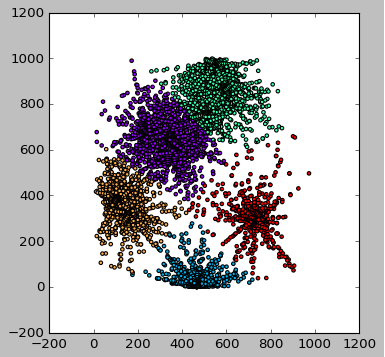Delay Tolerant Networks(DTNs) are networks where the link connectivity may be frequently disrupted. So, we can't rely on all nodes in the network to be known at any moment to make routing decisions.
Current routing methods are based on Epidemic Routing, which is very resource hungry. This work explores machine learning to make improved routing decisions and reduce overhead through training the model on the network history.
We model the routing issue as a multi-label classification problem. Here, we classify the nodes to which the message will be forwarded to till either it reaches the destination or it gets dropped.
But this transforms the problem into a binary classification problem for each node and doesnt take into account the interdependence between the outputs. We solve the interdependence issue by using Ensemble Classifier Chains(ECC).
We select five well-known classifiers (XGBoost, AdaBoost, Decision Tree, Gaussian Naïve Bayes, and K-Nearest Neighbors), to determine which would provide the best performance.
We simulated the network using ONE Simulator.
For simulating the movement of the network nodes we used the ZebraNet-UTM1 mobility traces.
A major roadblock was to generate the movement data from the traces, to a format compatible with ONE Simulator.
I wrote trace2one.py script to do the conversion. Apart from this,
I wrote some custom classes for ONE to extract relevant features.
To generate the training data, we select two routers - Epidemic and ProPHET Routers, with the network configurations in configurations.txt.
We chose the following features for our classifiers.
- Time index in the epoch
- Source node
- Destination node
- Region code for source node
- Region code for destination node
- Message delivery status
We use k-means clustering to assign a region to each node. The optimum number of clusters was determined used the k-elbow method.
The classifier returns the output labels corresponding to each node indicating if the message was forwarded to this node(0/1).
We use four well-known metrics to evaluate the accuracy of the classifiers.
- Jaccard Similarity Score - Also called multi label accuracy.
- f1 Score - A weighted average of precision and recall.
- Hamming Loss - Calculates the fraction of labels incorrectly classified.
- Zero-One Loss - Similar to Hamming Loss, but considers entire prediciton incorrect if any label in the prediction is incorrect.
-
Jaccard Similarity Score -
 Higher score→ More accurate classifications.
Higher score→ More accurate classifications.
a. XGBoost is the best performing classifier.
b. PRoPHET router performs better than Epidemic router. -
f1 Score -
 Higher score→ More accurate classifications.
Higher score→ More accurate classifications.
a. XGBoost is the best performing classifier.
b. Epidemic router performs marginally better than PRoPHET router. -
Hamming Loss -
 Lower value → Lesser misclassifications, better results.
Lower value → Lesser misclassifications, better results.
a. XGBoost is again the best performing classifier.
b. PRoPHET router performs better than Epidemic router. -
Zero-One Loss -
 Lower value → Lesser misclassifications, better results.
Lower value → Lesser misclassifications, better results.
a. XGBoost is again the best performing classifier.
b. ProPHET router performs better than Epidemic router
The main reference that I used for implementing the code was the paper Delay Tolerant Network Routing as a Machine Learning Classification Problem
